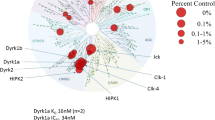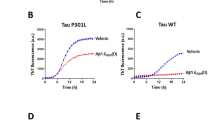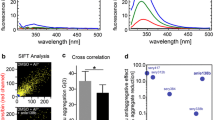Abstract
Davunetide (NAP) is a leading drug candidate being tested against tauopathy. Davunetide is an eight-amino-acid peptide fragment derived by structure—activity studies from activity-dependent neuroprotective protein, activity-dependent neuroprotective protein (ADNP). ADNP is essential for brain formation. ADNP haploinsufficiency in mice results in tauopathy and cognitive deficits ameliorated by davunetide treatment. This article summarizes in brief recent reviews about NAP protection against tauopathy including the all D-amino acid analogue—D-NAP (AL-408). D-NAP was discovered to have similar neuroprotective functions to NAP in vitro. Here, D-NAP was tested as prophylactic as well as therapeutic treatment for amytrophic lateral sclerosis (ALS) in the widely used TgN(SOD1-G93A)1Gur transgenic mouse model. Results showed D-NAP-associated prophylactic protection, thus daily treatment starting from day 2 of age resulted in a prolonged life course in the D-NAP-treated mice, which was coupled to a significant decrease in tau hyperphosphorylation. These studies correlate protection against tau hyperphosphorylation and longevity in a severe model of ALS-like motor impairment and early mortality. NAP is a first-in-class drug candidate/investigation compound providing neuroprotection coupled to inhibition of tau pathology. D-NAP (AL-408) is a pipeline product.


Similar content being viewed by others
References
Baker M, Litvan I, Houlden H, Adamson J, Dickson D, Perez-Tur J, Hardy J, Lynch T, Bigio E, Hutton M (1999) Association of an extended haplotype in the tau gene with progressive supranuclear palsy. Hum Mol Genet 8:711–715
Bassan M, Zamostiano R, Davidson A, Pinhasov A, Giladi E, Perl O, Bassan H, Blat C, Gibney G, Glazner G, Brenneman DE, Gozes I (1999) Complete sequence of a novel protein containing a femtomolar-activity-dependent neuroprotective peptide. J Neurochem 72:1283–1293
Berger Z, Roder H, Hanna A, Carlson A, Rangachari V, Yue M, Wszolek Z, Ashe K, Knight J, Dickson D, Andorfer C, Rosenberry TL, Lewis J, Hutton M, Janus C (2007) Accumulation of pathological tau species and memory loss in a conditional model of tauopathy. J Neurosci 27:3650–3662
Boillee S, Vande Velde C, Cleveland DW (2006) ALS: a disease of motor neurons and their nonneuronal neighbors. Neuron 52:39–59
Braak H, Braak E (1991) Neuropathological stageing of Alzheimer-related changes. Acta Neuropathol 82:239–259
Brandt R, Hundelt M, Shahani N (2005) Tau alteration and neuronal degeneration in tauopathies: mechanisms and models. Biochim Biophys Acta 1739:331–354
Brenneman DE, Gozes I (1996) A femtomolar-acting neuroprotective peptide. J Clin Invest 97:2299–2307
Brenneman DE, Hauser J, Neale E, Rubinraut S, Fridkin M, Davidson A, Gozes I (1998) Activity-dependent neurotrophic factor: structure-activity relationships of femtomolar-acting peptides. J Pharmacol Exp Ther 285:619–627
Brenneman DE, Spong CY, Hauser JM, Abebe D, Pinhasov A, Golian T, Gozes I (2004) Protective peptides that are orally active and mechanistically nonchiral. J Pharmacol Exp Ther 309:1190–1197
Chen SY, Charness ME, Wilkemeyer MF, Sulik KK (2005) Peptide-mediated protection from ethanol-induced neural tube defects. Dev Neurosci 27:13–19
Devred F, Douillard S, Briand C, Peyrot V (2002) First tau repeat domain binding to growing and taxol-stabilized microtubules, and serine 262 residue phosphorylation. FEBS Lett 523:247–251
Divinski I, Mittelman L, Gozes I (2004) A femtomolar acting octapeptide interacts with tubulin and protects astrocytes against zinc intoxication. J Biol Chem 279:28531–28538
Divinski I, Holtser-Cochav M, Vulih-Schultzman I, Steingart RA, Gozes I (2006) Peptide neuroprotection through specific interaction with brain tubulin. J Neurochem 98:973–984
Farah CA, Nguyen MD, Julien JP, Leclerc N (2003) Altered levels and distribution of microtubule-associated proteins before disease onset in a mouse model of amyotrophic lateral sclerosis. J Neurochem 84:77–86
Goedert M, Spillantini MG (2011) Pathogenesis of the tauopathies. J Mol Neurosci 45:425–431
Gold M, Lorenzl S, Stewart AJ, Morimoto BH, Williams DR, Gozes I (2012) Critical appraisal of the role of davunetide in the treatment of progressive supranuclear palsy. Neuropsychiatr Dis Treat 8:85–93
Gozes I (2010a) Davunetide (NAP) pharmacology: neuroprotection and tau. In: Martinez A (ed) Emerging drugs and targets for Alzheimer’s disease, 1st edn. Royal Society of Chemistry, Cambridge, pp 108–128
Gozes I (2010b) Tau pathology and future therapeutics. Curr Alzheimer Res 7:685–696
Gozes I (2011) Microtubules (tau) as an emerging therapeutic target: NAP (davunetide). Curr Pharm Des 17:3413–3417
Gozes I, Brenneman DE (1996) Activity-dependent neurotrophic factor (ADNF). An extracellular neuroprotective chaperonin? J Mol Neurosci 7:235–244
Gurney ME, Pu H, Chiu AY, Dal Canto MC, Polchow CY, Alexander DD, Caliendo J, Hentati A, Kwon YW, Deng HX et al (1994) Motor neuron degeneration in mice that express a human Cu, Zn superoxide dismutase mutation. Science 264:1772–1775
He CZ, Hays AP (2004) Expression of peripherin in ubiquinated inclusions of amyotrophic lateral sclerosis. J Neurol Sci 217:47–54
Holtser-Cochav M, Divinski I, Gozes I (2006) Tubulin is the target binding site for NAP-related peptides: ADNF-9, D-NAP, and D-SAL. J Mol Neurosci 28:303–307
Idan-Feldman A, Ostritsky R, Gozes I (2012) Tau and caspase 3 as targets for neuroprotection. Int J Alzheimers Dis 2012:493670.
Incerti M, Toso L, Vink J, Roberson R, Nold C, Abebe D, Spong CY (2011) Prevention of learning deficit in a Down syndrome model. Obstet Gynecol 117:354–361
Leker RR, Teichner A, Grigoriadis N, Ovadia H, Brenneman DE, Fridkin M, Giladi E, Romano J, Gozes I (2002) NAP, a femtomolar-acting peptide, protects the brain against ischemic injury by reducing apoptotic death. Stroke 33:1085–1092
Ludolph AC, Bendotti C, Blaugrund E, Hengerer B, Loffler JP, Martin J, Meininger V, Meyer T, Moussaoui S, Robberecht W, Scott S, Silani V, Van Den Berg LH (2007) Guidelines for the preclinical in vivo evaluation of pharmacological active drugs for ALS/MND: report on the 142nd ENMC international workshop. Amyotroph Lateral Scler 8:217–223
Matsuoka Y, Gray AJ, Hirata-Fukae C, Minami SS, Waterhouse EG, Mattson MP, LaFerla FM, Gozes I, Aisen PS (2007) Intranasal NAP administration reduces accumulation of amyloid peptide and tau hyperphosphorylation in a transgenic mouse model of Alzheimer’s disease at early pathological stage. J Mol Neurosci 31:165–170
Matsuoka Y, Jouroukhin Y, Gray AJ, Ma L, Hirata-Fukae C, Li HF, Feng L, Lecanu L, Walker BR, Planel E, Arancio O, Gozes I, Aisen PS (2008) A neuronal microtubule-interacting agent, NAPVSIPQ, reduces tau pathology and enhances cognitive function in a mouse model of Alzheimer’s disease. J Pharmacol Exp Ther 325:146–153
Nguyen MD, Lariviere RC, Julien JP (2001) Deregulation of Cdk5 in a mouse model of ALS: toxicity alleviated by perikaryal neurofilament inclusions. Neuron 30:135–147
Pasinelli P, Brown RH (2006) Molecular biology of amyotrophic lateral sclerosis: insights from genetics. Nat Rev Neurosci 7:710–723
Pollak D, Cairns N, Lubec G (2003) Cytoskeleton derangement in brain of patients with Down syndrome, Alzheimer’s disease and Pick’s disease. J Neural Transm Suppl:149–158
Ramsden M, Kotilinek L, Forster C, Paulson J, McGowan E, SantaCruz K, Guimaraes A, Yue M, Lewis J, Carlson G, Hutton M, Ashe KH (2005) Age-dependent neurofibrillary tangle formation, neuron loss, and memory impairment in a mouse model of human tauopathy (P301L). J Neurosci 25:10637–10647
Shiryaev N, Jouroukhin Y, Giladi E, Polyzoidou E, Grigoriadis NC, Rosenmann H, Gozes I (2009) NAP protects memory, increases soluble tau and reduces tau hyperphosphorylation in a tauopathy model. Neurobiol Dis 34:381–388
Shiryaev N, Pikman R, Giladi E, Gozes I (2011) Protection against tauopathy by the drug candidates NAP (davunetide) and D-SAL: biochemical, cellular and behavioral aspects. Curr Pharm Des 17:2603–2612
Terry RD (1996) The pathogenesis of Alzheimer disease: an alternative to the amyloid hypothesis. J Neuropathol Exp Neurol 55:1023–1025
Vulih-Shultzman I, Pinhasov A, Mandel S, Grigoriadis N, Touloumi O, Pittel Z, Gozes I (2007) Activity-dependent neuroprotective protein snippet NAP reduces tau hyperphosphorylation and enhances learning in a novel transgenic mouse model. J Pharmacol Exp Ther 323:438–449
Wilkemeyer MF, Chen SY, Menkari CE, Sulik KK, Charness ME (2004) Ethanol antagonist peptides: structural specificity without stereospecificity. J Pharmacol Exp Ther 309:1183–1189
Witman GB, Cleveland DW, Weingarten MD, Kirschner MW (1976) Tubulin requires tau for growth onto microtubule initiating sites. Proc Natl Acad Sci U S A 73:4070–4074
Zemlyak I, Sapolsky R, Gozes I (2009a) NAP protects against cytochrome c release: inhibition of the initiation of apoptosis. Eur J Pharmacol 618:9–14
Zemlyak I, Sapolsky R, Gozes I (2009b) NAP protects against cyanide-related microtubule destruction. J Neural Transm 116:1411–1416
Acknowledgments
This work is in partial fulfillment of the Ph.D. thesis requirements of Y. Jouroukhin and the M.Sc. thesis of Ms. Regina Ostritsky. Support was provided by the Levie-Edersheim-Gitter functional brain imaging scholarship, AMN Foundation, IsrALS, Prize4life, Canadian Friends of Tel Aviv University—Montreal Circle of Friends, Joe and Grace Alter, Barbara and Don Seal, the Oberfeld family and the Adams Family, and Allon Therapeutics Inc. We thank the Allon Therapeutics team, Drs. Michael Gold and Alistair Stewart, for valuable input. Professor Illana Gozes is the incumbent of the Lily and Avraham Gildor Chair for the Investigation of Growth Factors and the Director of the Adams Super Center for Brain Studies, the Levie-Edersheim-Gitter Institute for Functional Brain Imaging and the Dr. Diana and Zelman Elton (Elbaum) Laboratory for Molecular Neuroendocrinology at Tel Aviv University.
Conflict of Interest
Professor Gozes serves as Director, Founding Scientist at Allon Therapeutics Inc., the company that develops davunetide (NAP) (www.allontherapeutics.com).
Author information
Authors and Affiliations
Corresponding author
Rights and permissions
About this article
Cite this article
Jouroukhin, Y., Ostritsky, R. & Gozes, I. D-NAP Prophylactic Treatment in the SOD Mutant Mouse Model of Amyotrophic Lateral Sclerosis: Review of Discovery and Treatment of Tauopathy. J Mol Neurosci 48, 597–602 (2012). https://doi.org/10.1007/s12031-012-9882-6
Published:
Issue Date:
DOI: https://doi.org/10.1007/s12031-012-9882-6




